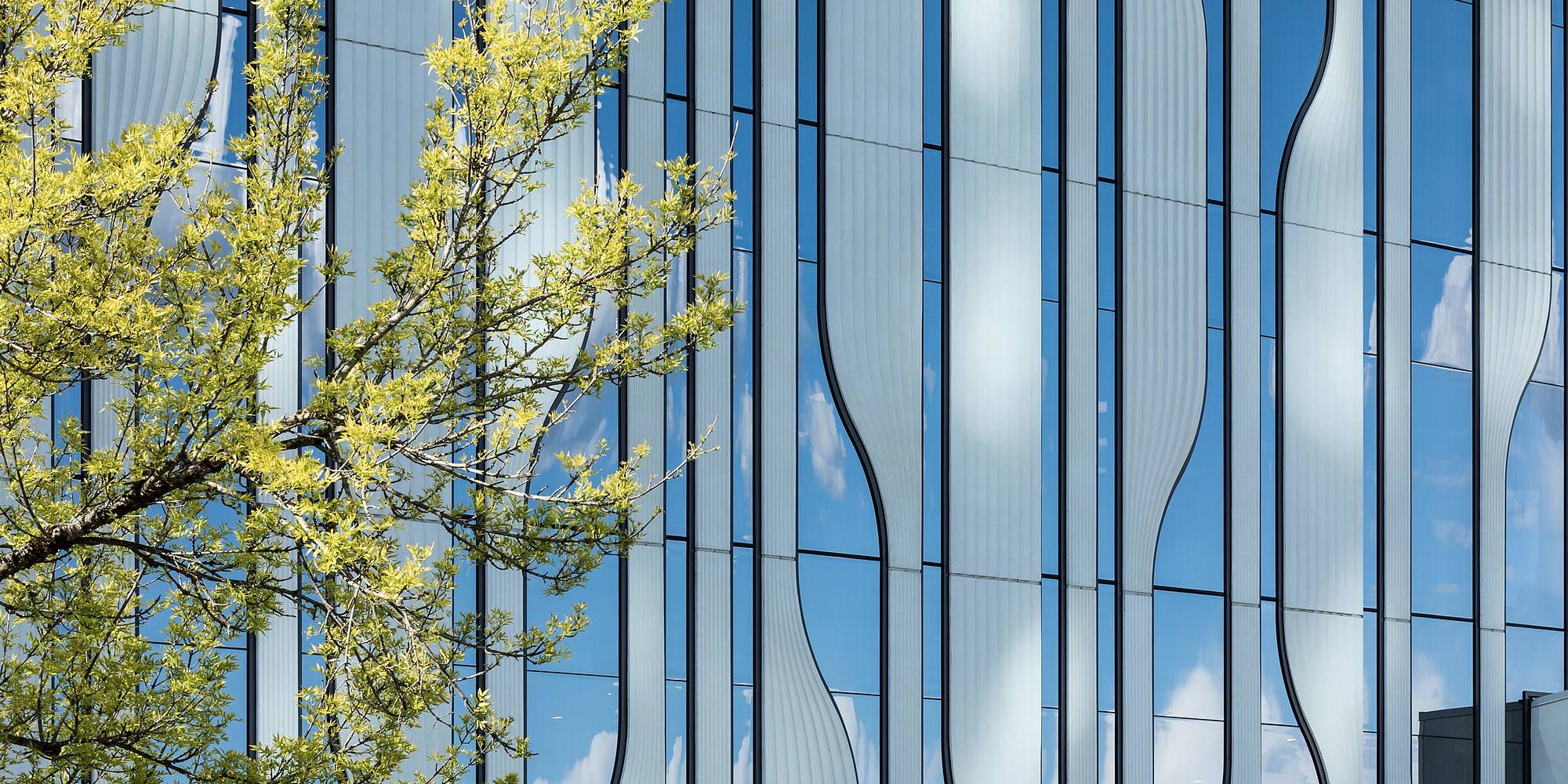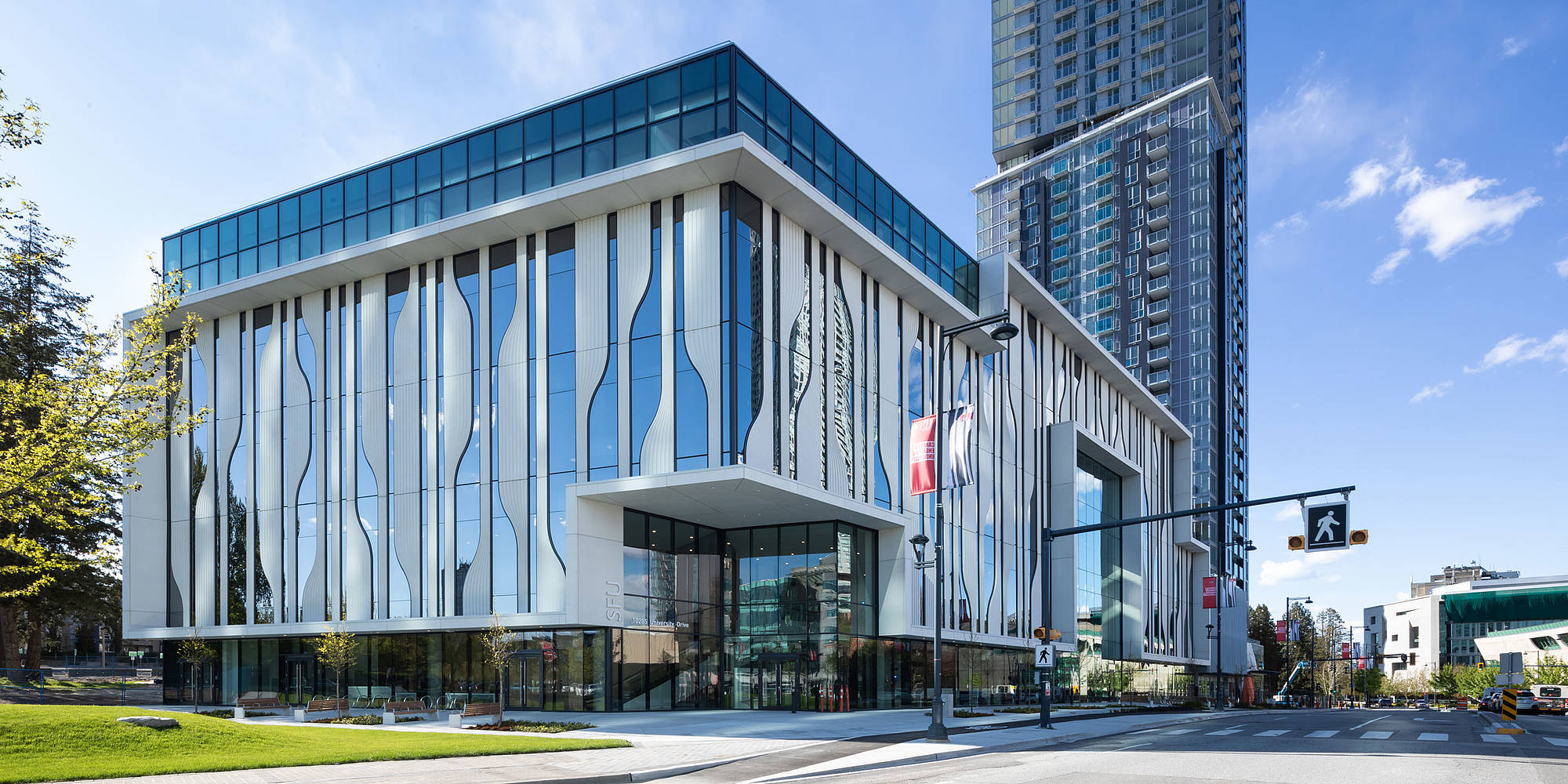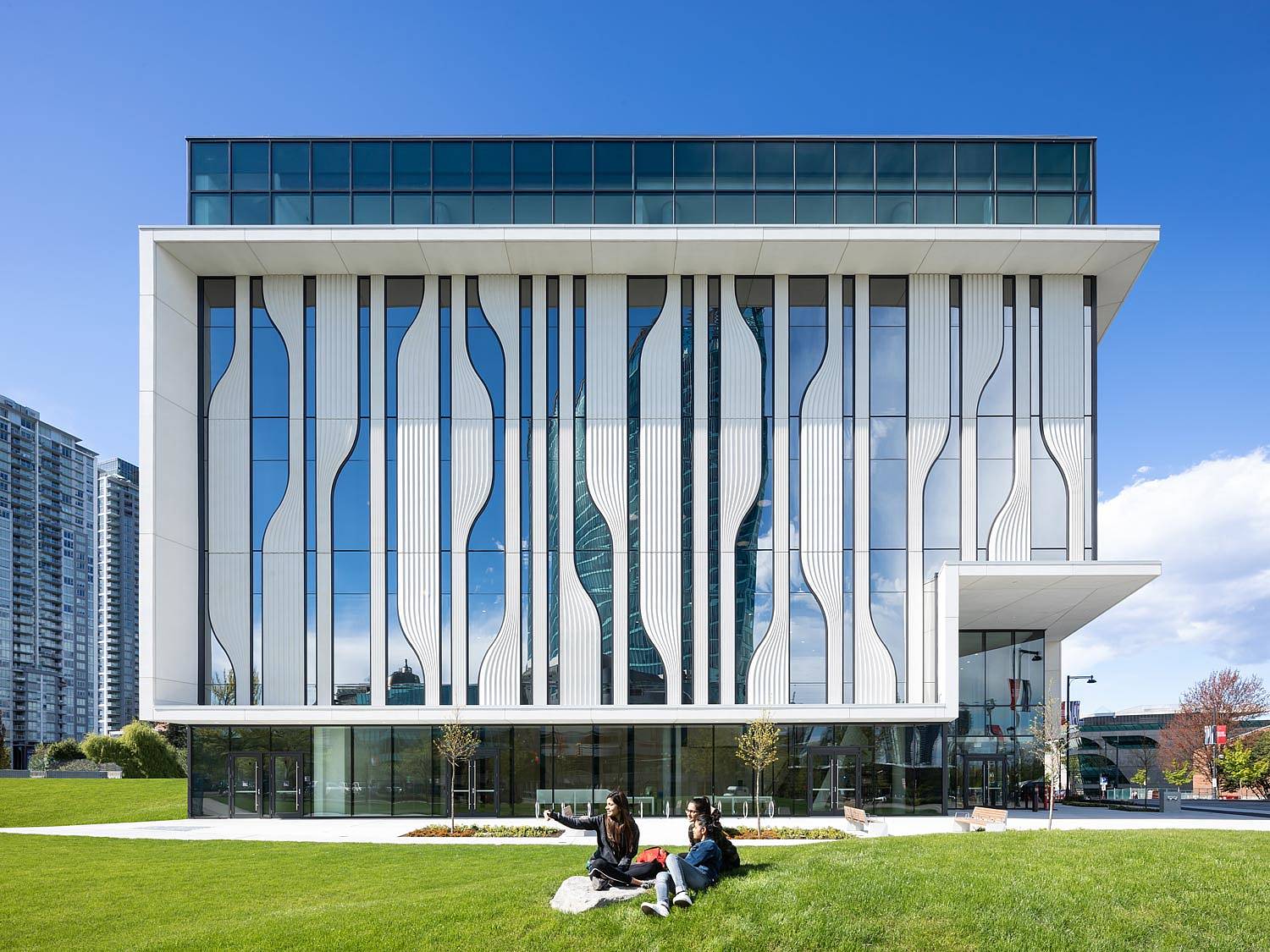Simon Fraser University, Surrey, Canada
The Simon Fraser University in Canada teaches climate-friendly and sustainable working practices for engineers in the energy sector. The new build for the teaching block sets a good example.
Simon Fraser University in Surrey, Canada, is working on clean solutions for future power generation. The Sustainable Energy and Engineering Program (SEE), which teaches integrated and interdisciplinary approaches for clean, renewable and sustainable energy solutions for the future, forms part of the study program in energy engineering. The university itself has lived up to this ambition by deploying sustainable solutions to construct the new study course building, earning a gold LEED certificate in the process.
The approximately 60 lecturers and more than 500 students use a five-story building distributed over 16,000 square meters that was designed by the Canadian office Revery Architecture. Shinobu Homma and his team faced a special challenge: Due to an extremely tight schedule, at times the design and construction phases were running concurrently. “The constrained schedule was also a fundamental consideration in the decision to utilize prefabricated precast elements for the façade which not only allowed the building to be closed in quickly to meet government funding deadlines, but also minimized construction debris and noise impact on site”, say the architects. A long life cycle and low maintenance requirements also played a role in the choice of precast concrete elements.
Revery designed the building around a light-flooded atrium, accommodated laboratories for dry and wet experiments, study rooms, an auditorium with 400 seats, offices and common areas for the students.
The façade consists of wavy, high-performance concrete elements and reflective glass. “The design, derived from abstracted circuit board imagery and replicated on the wooden panels lining the lecture hall, symbolizes the technological subject matter that will be taught within the building and creates an eye-catching landmark in Surrey’s City Centre area”, say the architects.


The SureClad Concrete precast plant assumed production of the precast elements. “The stunning precast pieces are textured with a wave-patterned surface, a technically difficult finish when working with unforgiving white concrete”, says Zoran Stanojevic of SureClad. The SureClad experts produced and installed 736 white precast concrete elements, 335 of them with the unique circuit board design. The concrete was a mixture of white sand, white cement and a soft gray aggregate.
Elastic formliners were used to give the finished parts their structure. For this purpose, RECKLI’s American subsidiary US Formliner initially produced individual positive models according to the ideas of the design team, which were then used to cast the molds. Nine formliners were used in six different versions.
When pouring the custom concrete mix, SureClad encountered slight discoloration of the white concrete and asked US Formliner for help. The experts recommended the use of RECKLI PUR seals and thinners. With the use of construction chemicals from the RECKLI Precision Chemicals division, no further discoloration occurred.
The production and installation process took five-and-a-half months and was completed in June 2018. In 2018 The façade won an award from the Canadian Institute for Precast Concrete and Prestressed Concrete for its innovative design, implementation and cooperation.
